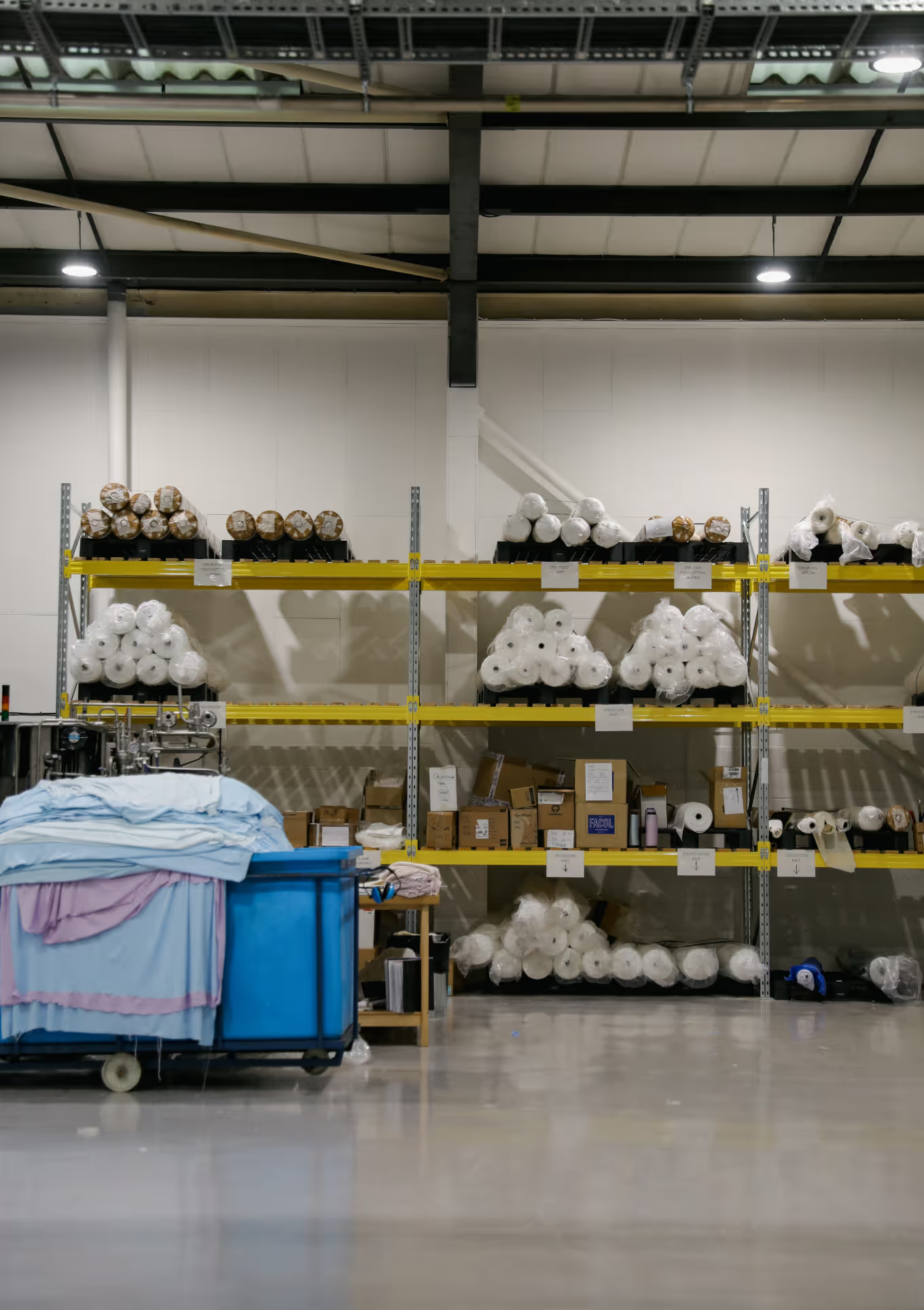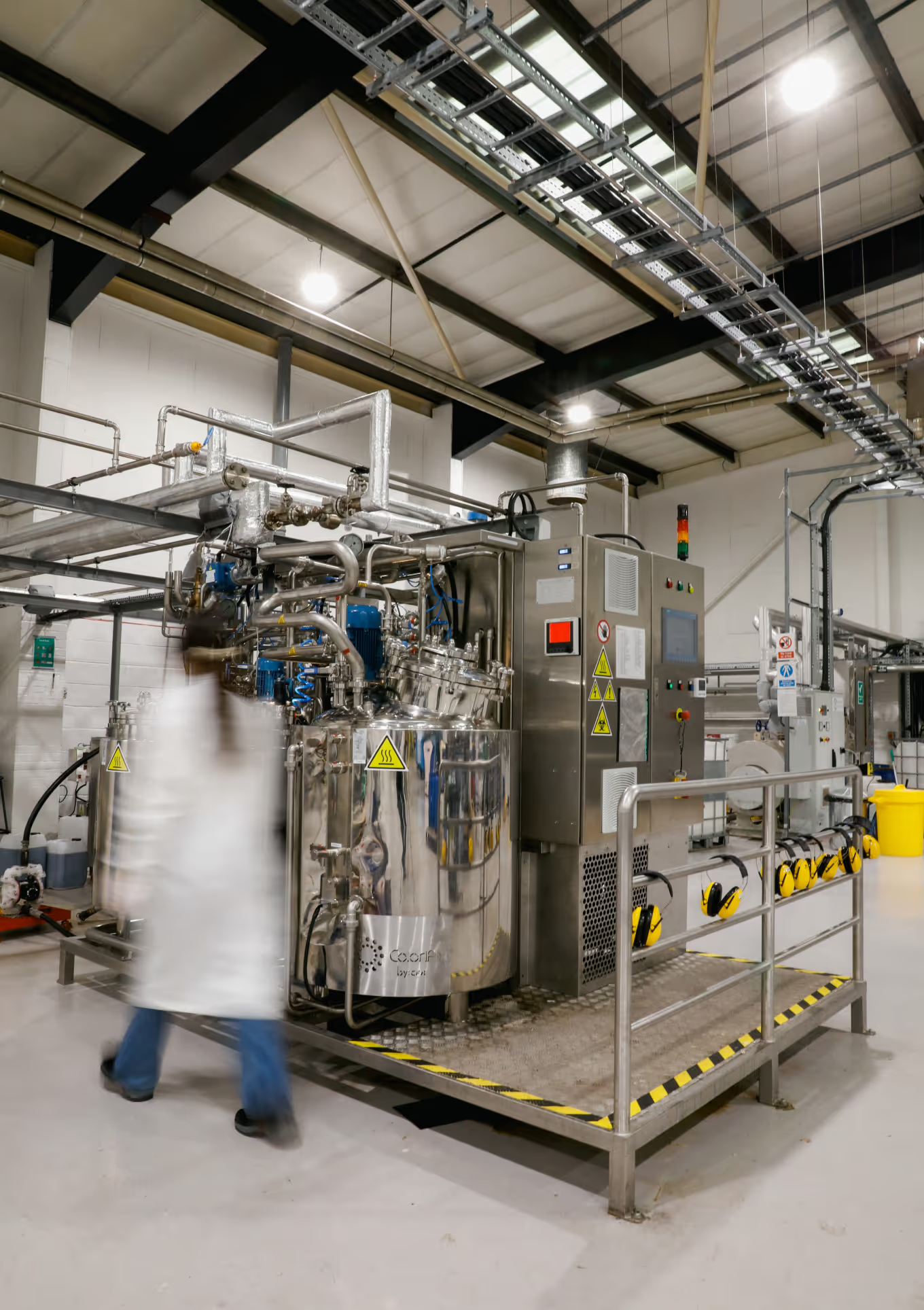

Work with us
We understand the issues and, together, we can generate the solutions.
Colorifix makes it possible for you to be part of the change.
Our technology works seamlessly with existing industrial systems, making it easy to adopt without causing job loss or social upheaval. Our semi-distributed model lowers carbon emissions and promotes circular economies in textile manufacturing areas.
Do you want to join us on our mission?
We’d love to hear from you.
We collaborate closely with dye houses and textile mills to bring our technology directly to your operations, enabling you to grow the colour on-site and integrate sustainable practices into your processes. If you're interested in partnering with us, exploring how our technology can fit into your business, or learning more about our costs and implementation, our team is ready to connect with you.
We’re excited to discuss how we can work together to revolutionise the industry and drive positive change. You know better than anyone how much of an impact your work has on the environment, and we know you want to do the best you can. Your partnership is key to making a substantial impact, and we’re eager to explore how we can make it happen.

It’s not just dye houses or mills that can make a difference. Everyone, including brands and consumers alike, holds the ultimate power over the supply chain and what gets produced. We have a list of the partners we‘re already working with but we’d love to hear from you if you have suggested partners you’d like us to consider collaborating with. We’re open to extending our network and to continuing to make an impact wherever we can.

We’re all in this together, and the more we collaborate, the greater the impact we can achieve. It’s not just about individual efforts but about uniting our voices to educate, advocate, and shape the narrative for meaningful change. We need your help to amplify our message, spread awareness, and drive the movement forward.
Whether you're an activist, journalist, or someone with a platform to influence, your role is crucial. Let's join forces, combine our strengths, and work together to create lasting, transformative change. The future we’re striving for requires all of us to contribute—let’s make it happen together.

FAQ
Conventional textile dyeing is a highly resource-intensive process, consuming large amounts of water and energy, and generating a significant carbon footprint. It involves the use of over 70 toxic chemicals, which not only harm the environment but also contribute to water pollution.
In contrast, the Colorifix technology offers a revolutionary approach. Our process eliminates the need for toxic chemicals entirely, using eco-friendly pigments and producing only non-toxic waste. Additionally, our method operates at lower temperatures and uses significantly less water, making it a far more environmentally friendly alternative to traditional dyeing.
Colorifix has developed hundreds of colours over the years, but only a few have passed the rigorous fastness tests. Achieving good lightfastness can be challenging for certain colours and fabrics. For instance, while nylon absorbs colour effectively, its lightfastness properties are relatively poor compared to other textiles.
Read more about our colours and their origin in our Colour Stories
We operate with a hybrid business model, which involves supplying hardware and media (food for microorganisms) to dye houses, while also earning royalty revenues from mills that sell dyed products to fashion brands. This means that we produce the pigments ourselves, implement our bioreactors at customers sites and they grow it into the dye liquid they need for dyeing locally, avoiding unnecessary transportation and emissions.
Engineering biology, or synthetic biology, systematically applies genetic modification to redesign organisms with new abilities for useful purposes. While traditional genetic engineering transfers individual genes between cells, synthetic biology assembles standardised genetic parts to create novel microbial genomes, applying engineering principles to biology.
To begin, we design the colour. Historically, natural colourants were used for dyeing, but extracting enough pigment, like red from a parrot's feather, required unsustainable and unethical practices. Due to the need for consistency and volume, the industry shifted to chemical dyes, leading to significant environmental harm.
By translating the DNA "language" into a bacterial "dialect," we can produce the same pigments more efficiently and sustainably.
The technology works on a broad range of fabrics from naturals to synthetics: Cotton, Wool, Silk, Polyester, Nylon, Polyamide, Lyocell, Tencel. We’re currently undergoing other material exploration. So far the biggest challenge we’ve had is certain forms of polyurethane.
We appreciate that not everyone is familiar with synthetic biology or genetic modification (GM) and some may fear the impact of its applications on the environment and human health. At Colorifix, nature and people are at the core of what we do; and we believe that when managed appropriately, GM technology has enormous potential to advance both environmental and human health without compromising safety.
Humans have been altering the genomes of plants and animals for hundreds of years using traditional breeding techniques. Selecting for specific, desired traits has resulted in a variety of organisms ranging from sweet corn to domesticated cats and dogs. In recent decades, however, advances in the field of genetic engineering have allowed for precise control over the genetic changes introduced into an organism. The systematic application of these genetic engineering tools and methods— or synthetic biology— is the driving force behind our technology.
Colorifix relies on a GM process to make a non-GM product. This is an important distinction from many GM applications such as cotton or food where the modified organism is the product. In our case, we genetically engineer a microorganism to produce a naturally-occurring pigment and leverage a basic biological process to transfer that colour onto textiles. In the final stage of dyeing, we eliminate all live microorganisms through a validated inactivation step, resulting in a sterile, non-GM product.
